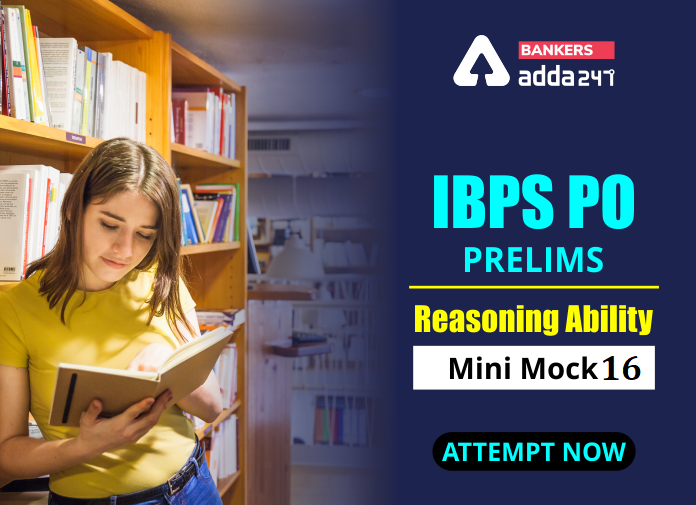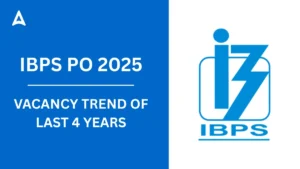Table of Contents
Directions (1-5): In this question, relationship between different elements is shown in the statements. The statements are followed by conclusions. Study the conclusions based on the given statement and select the appropriate answer.
Q1. Statements: A<B<C=G, G≥K<L, K≥F
Conclusions:
I. G>F II. G=F
(a) Only conclusion I is true
(b) Only conclusion II is true
(c) Either conclusion I or II is true
(d) Both conclusions I and II are true
(e) Neither conclusion I nor II is true
Q2. Statements: A = P <W < V >K > Q; B < A; K = M
Conclusions:
I. M>Q
II. A > V
(a) Only conclusion I is true
(b) Only conclusion II is true
(c) Either conclusion I or II is true
(d) Both conclusions I and II are true
(e) Neither conclusion I nor II is true
Q3. Statements: A = P <W < V >K > Q; B < A; K = M
Conclusions:
I. B<V
II. V>Q
(a) Only conclusion I is true
(b) Only conclusion II is true
(c) Either conclusion I or II is true
(d) Both conclusions I and II are true
(e) Neither conclusion I nor II is true
Q4. Statements: H ≤ G = B < E; B ≤W
Conclusions:
I. H < E
II. H≤B
(a) Only conclusion I is true
(b) Only conclusion II is true
(c) Either conclusion I or II is true
(d) Both conclusions I and II are true
(e) Neither conclusion I nor II is true
Q5. Statements: M <U ≤ Q < L = V < W ≥ Y; B = V ≤ R
Conclusions:
I. Y< B
II. R < Q
(a) Only conclusion I is true
(b) Only conclusion II is true
(c) Either conclusion I or II is true
(d) Both conclusions I and II are true
(e) Neither conclusion I nor II is true
Directions: (6-10): In these questions, relationship between different elements is shown in the statements. These statements are followed by three/four conclusions. Read the statements and decide which of the following conclusions follow from the given statements.
Q6. Statements: P<A≤N, P>T, M≤A<S
Conclusions:
I. S>P
II. T<A
III. N>T
IV. S>N
(a) Only I and II follow
(b) Only III and IV follow
(c) Only I, II and III follow
(d) Only I and IV follow
(e) None of these
Q7. Statements: P≥R<S≥M>E≥B
Conclusions:
I. E<S
II. B≤S
III. M≥S
IV. R=M
(a) Only I follows
(b) Only II and IV follow
(c) Only III and IV follow
(d) Only II follows
(e) None of these
Q8. Statements: G≥M>P, Q≤R>P
Conclusions:
I. G>R
II. Q>M
III. P< G
IV. M<R
(a) Only I and III follow
(b) Only II follows
(c) Only III follows
(d) Only II and IV follow
(e) None of these
Q9. Statements: N≥Q>R=B≥S, R>F≥D
Conclusions:
I. B>D
II. F≤S
III. N>D
IV. Q>F
(a) Only I, II and III follow
(b) Only I, III and IV follow
(c) Only II, III and IV follow
(d) Only I, II and IV follow
(e) None of these
Q10. Statements: B≥D≥P=Q≥S=K>T≥V
Conclusions:
I. B=K
II. D>K
III. V<Q
IV. T<P
(a) Only I and II follow
(b) Only II and III follow
(c) Only III and IV follow
(d) Only I and III follow
(e) None of these
Directions (11-15): In the following questions, the symbols @, #, $, ⋆ and © are used with different meanings as explained below:
‘A @ B’ means ‘A is neither smaller than nor equal to B’.
‘A # B’ means ‘A is not greater than B’.
‘A $ B’ means ‘A is neither greater than nor equal to B’.
‘A % B’ means ‘A is neither greater than nor smaller than B.
‘A © B’ means ‘A is not smaller than B’.
Assuming the above statements to be true, you have to decide which of the conclusions is/are definitely true and then mark your answer accordingly.
Q11. Statement: F @ J, J # R, R % L, L © M
Conclusions:
I. F $ R
II. M # R
III. M © J
(a) None is true
(b) Only I is true
(c) Only II is true
(d) Only either II or III is true
(e) All are true
Q12. Statement: T # W, W $ Q, Q © D, D @ J
Conclusions:
I. J $ T
II. T # J
III. T $ Q
(a) Only I and III are true
(b) Only either I or II is true
(c) Only II and III are true
(d) Only III and either I or II are true
(e) None of these
Q13. Statement: L # V, V $ E, E © U, U @ B
Conclusions:
I. B $ E
II. L $ E
III. B % L
(a) Only I and II are true
(b) Only III is true
(c) Only either I or II is true
(d) All are true
(e) None of these
Q14. Statement: M $ T, T $ R, R @ H, H # G
Conclusions:
I. M $ H
II. R @ G
III. M # R
(a) Only I is true
(b) Only II is true
(c) Only III is true
(d) All are true
(e) None is true
Q15. Statement: H © R, R @ W , W % F, J $ F
Conclusions:
I. H @ F
II. J $ W
III. R @ J
(a) Only I and II are true
(b) Only II and III are true
(c) Only III is true
(d) Only either I or III is true
(e) All are true
Practice More Questions of Reasoning for Competitive Exams:
| Reasoning for Competitive Exams |
IBPS PO Prelims Reasoning Ability Mini Mock 15- Puzzles |
IBPS RRB Prelims Reasoning Ability Mini Mock 2- Coding-Decoding |
IBPS PO Prelims 2020 Mini Mock Test Series |
Solutions
Solutions (1-5):
S1. Ans.(c)
Sol. I. G>F (false) II. G=F (false)
S2. Ans.(a)
Sol. I. M>Q(true) II. A > V(false)
S3. Ans.(d)
Sol. I. B<V(true) II. V>Q(true)
S4. Ans.(d)
Sol. I. H<E(true) II. H≤B(true)
S5. Ans.(e)
Sol. I. Y< B(false) II. R < Q(false)
Solutions (6-10):
S6. Ans.(c)
Sol. I.S>A>P(True) II.S>A>P>T(True)
III.N≥A>P>T(True) IV.S>A≤N(False)
S7. Ans.(a)
Sol. I.E<M≤S(True) II.B≤E<M≤S(False)
III.M>S(False) IV.R<S≥M(False)
S8. Ans.(c)
Sol. I.G≥M>P<R(False) II.Q≤R>P<M(False)
III.P<M≤G(True) IV.M>P<R(False)
S9. Ans.(b)
Sol. I. B=R>F≥D(True) II. F<R=B≥S(False)
III.N≥Q>R>F≥D(True) IV.Q>R>F(True)
S10. Ans.(c)
Sol. I.B=K(False) II.D>K(False)
III.V<Q(True) IV. T<P(True)
Solutions (11-15):
S11. Ans.(c)
S12. Ans.(d)
S13. Ans.(a)
S14. Ans.(e)
S15. Ans.(e)
Download PDF of this Reasoning Quiz for IBPS PO 2020
Practice with Crash Course and Online Test Series for IBPS PO Prelims:




 GA Capsule for SBI Clerk Mains 2025, Dow...
GA Capsule for SBI Clerk Mains 2025, Dow...
 The Hindu Review October 2022: Download ...
The Hindu Review October 2022: Download ...
 IBPS PO Vacancy Trend of Last 4 Years
IBPS PO Vacancy Trend of Last 4 Years





